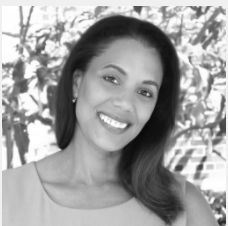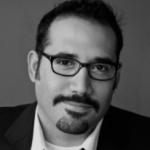Professor Lisa Pecot-Hebert’s two month road trip to SXSW 2017
For Professor Lisa Pecot-Hebert, the associate director of undergraduate journalism at the Annenberg School for Communication and Journalism, last year’s iteration of the annual SXSW festival wasn’t so much a travel destination, as a platform to share what she had learned from traveling through much of middle America just a few months prior. On a mission to better understand the individual people who are so often excluded from media coverage in favor of the country’s bicoastal regions, Pecot-Hebert embarked on an extensive road trip to gather the necessary data, eventually presenting her findings before a packed ballroom in Austin, Tex.
“Usually, since there’s so much going on at SXSW, people will stay for maybe a half-hour and then they’ll dip out, if there’s two things they want to see in an hour,” she said. “[At my session], no one left. It was weird, but rewarding all at the same time.”
The road to that joyous culmination point began in June 2016, when she initially filed her application to present at SXSW. After earning approval from the festival, Pecot-Hebert and her team began collecting quantitative data to prepare for the excursion, eventually setting off on the road trip in January and proceeding to meet as many people as possible.
Pecot-Hebert’s trip wasn’t politically motivated when she originally formulated the idea, but after the election of President Donald Trump midway through her preparation, the topic became somewhat unavoidable.
“When we were doing interviews, it was post-election, so even though we kept saying ‘we are not politically driven,’ we couldn’t let it go,” she said, “That’s who brought [Trump] in, so it became a little of a different story. Now you understand the power of Middle America, so for us, it was just perfect timing. Now I was getting the pulse on who these people are, and why it is that we almost ignore this part of the country, although the majority of the people in the United States live here.”
As she began meeting with individuals in states such as Nebraska and North Dakota, Pecot-Hebert found that her experiences differed somewhat from her expectations. One of the things that blew her away was the significant immigrant population that many residents brought up in conversations, which had increased diversity and altered the social landscape of the regions.
Even though people on these coasts are the ones elevated in most stories, media and the movies, we’re taking from what’s happening in Middle America,” she said. “The farm-to-table thing is so popular in places like New York where you’re paying $45-$50 for a plate, but [in Middle America] they live farm-to-table, it’s just what they do everyday.
“These churches would bring in refugees from Somalia, Kazakhstan, and all of these different places, and they would be merged into these lily-white, fairly conservative communities,” she said. “People were talking about the change in demographics, and it was fascinating to me. It took the story to a whole other trail where I didn’t think it was going, I even attended a candlelight vigil for immigrant families in Omaha, Nebraska, that was one of the most beautiful things I’ve ever experienced.”
Pecot-Hebert noted how some idealized practices in more urban areas of the country are simply routine for many rural residents, such as the trend of “farm-to-table” foods that are often priced at a premium due to their healthier, more natural qualities.
“Even though people on these coasts are the ones elevated in most stories, media and the movies, we’re taking from what’s happening in Middle America,” she said. “The farm-to-table thing is so popular in places like New York where you’re paying $45-$50 for a plate, but [in Middle America] they live farm-to-table, it’s just what they do everyday.”
Feedback that Pecot-Hebert received on the media’s coverage of these regions was less than stellar, sentiments she heard from many during her months on the road.
“They think we’re doing a p-ss-poor job [in reporting],” she said. “They were like, ‘we know that you think it’s Little House on the Prairie, or that there’s no diversity and everyone is racist.’ They understood their own stereotypes, and wanted to show that they weren’t true.”
We create these characters in media around these stereotypes, like with Iowa, you’ll think of corn, or ‘guess they really love Friday Night Lights, all they do is play football…It may be true, but they’re also all of these other things; they’re doctors and lawyers, they watch the same news programs, they value diversity and the LGBT community
Many believed the solution to the disconnect is as simple as journalists reaching out to them for their opinion on the stories in the news cycle, and bringing them into the conversation. Pecot-Hebert agrees with the strategy, seeing it as a more accurate and rational method for the media to report on America.
“We create these characters in media around these stereotypes, like with Iowa, you’ll think of corn, or ‘guess they really love Friday Night Lights, all they do is play football,’” she said. “It may be true, but they’re also all of these other things; they’re doctors and lawyers, they watch the same news programs, they value diversity and the LGBT community. Any time there is a major news story, no one is going there to find that voice, sources are always from the same places. It’s not reflective of what America is, or should be.”
Pecot-Hebert was fortunate enough to learn their true stories first-hand, but believes others in more cosmopolitan areas can discover these facts for themselves by branching out of their news bubble and following more local news outlets whose primary focus is covering the people of Middle America.
“We have LA Magazine, which is awesome and I love it; why not go online and read a South Dakota magazine every now and again?” she said. “Or pick up something from Kansas City, and understand the difference between Kansas City barbeque and Memphis barbecue. It’s just about educating yourself, and being a good citizen of America.”



Leave a Reply
Want to join the discussion?Feel free to contribute!